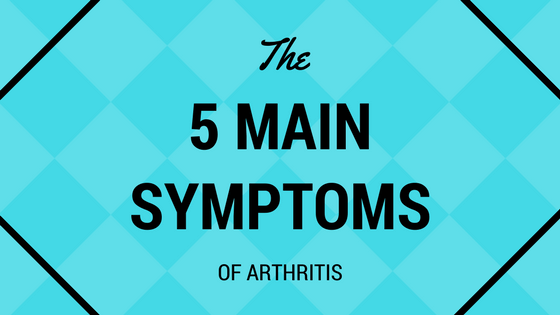Arthritis, known as rheumatoid arthritis or RA, is an autoimmune disorder that targets the lining of one or more of your joints, causing them to become inflamed. There are quite a handful of symptoms for this disease because there are more than 100 different types! Whatever form of arthritis you think you may have, below are some of the five main symptoms.
Joint Swelling
One early sign of arthritis is joint swelling, of which there are many different forms. The first consists of swelling of the physical lining of the joint, which causes your joints to appear much bigger than normal. Another form consists of increased synovial fluid production, which is a fluid found in joint cavities that reduce friction between the cartilage of joints during body movement. In addition, some forms of joint swelling consist of more blood entering the joints, which makes the joint swell and even feel warm. In general, most swelling can last anywhere between a few days to a few weeks, and most often, the joints that suffer from swelling feel stiff.
Joint Redness
You would ever think that redness around your joints would be a sign of arthritis, but it’s true — and actually quite common! The skin surrounding your joints may swell with blood, causing redness around the affected area. It can often be accompanied by warmth from the extra blood, joint stiffness, or joint pain.
Stiffness in Your Joints
With synovial fluids and blood causing your joints to swell, sometimes they can gradually firm up and “gel” together, which causes joint stiffness.
If you frequently wake up in the morning with stiff fingers, arms, and legs, that could be an early warning sign for arthritis. Typically your joints and muscles go into relaxation mode after any period of prolonged activity, like sleeping. However, determining arthritis after a good nights’ sleep can be difficult because some may confuse the stiffness with a typical morning ache.
Carefully note if you have a tough time moving or stiffness that lasts for several hours because that’s a major warning sign that you have arthritis!
Your Joint Stiffness Decreases Your Range of Motion
You may notice that you can’t move your ligaments as far or as much as you used to. This is because the frequent joint swelling has caused your ligaments to become unstable or deformed over time. And as the swelling progresses, you may find yourself unable to bend or straighten some of your joints, which may result in joint pain.
Joint Pain
Have you noticed you can’t do some activities you usually do? If typing, climbing the stairs, or even walking has become painful for you, you might have arthritis. An over-the-counter pain reliever can usually do the trick.

